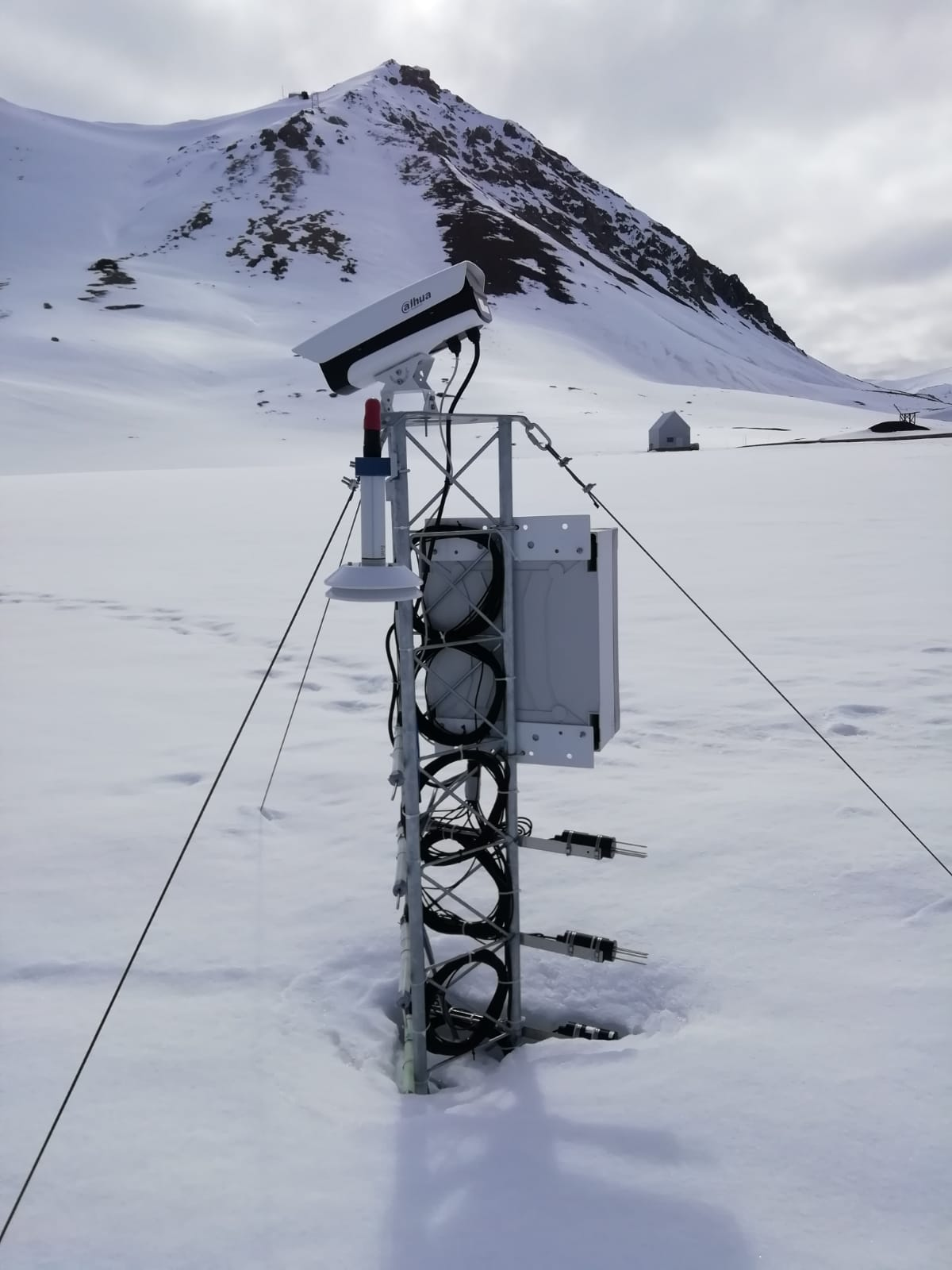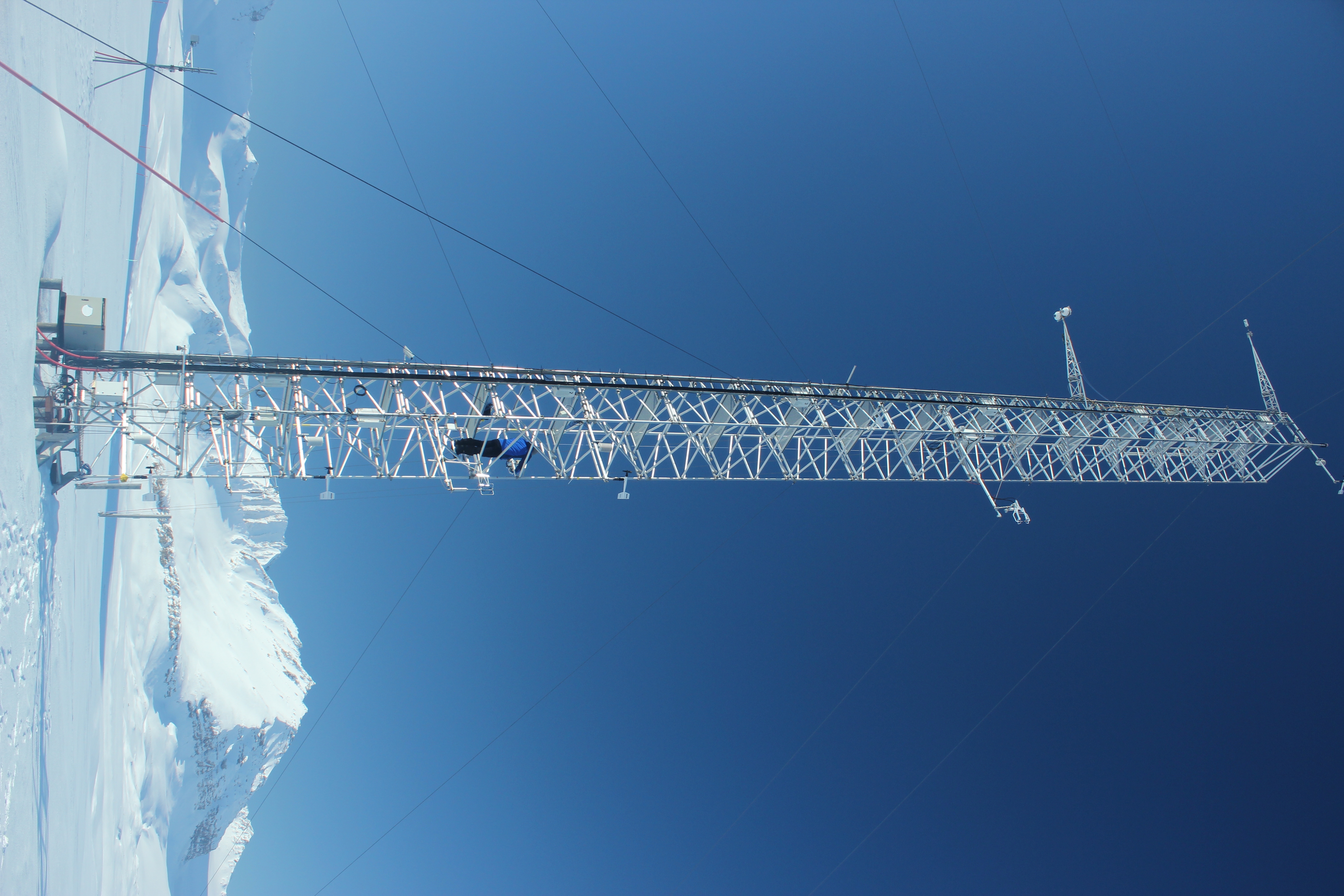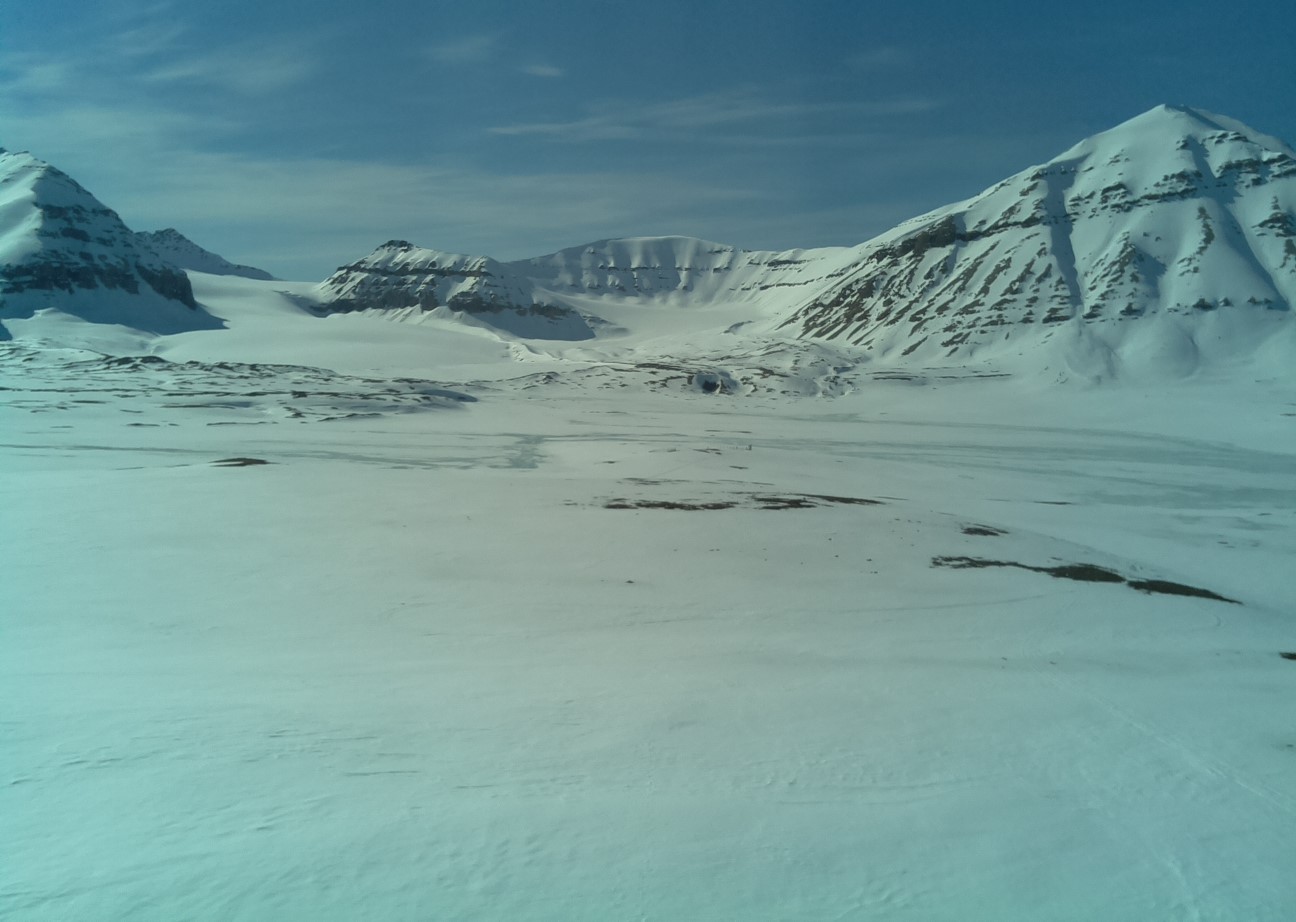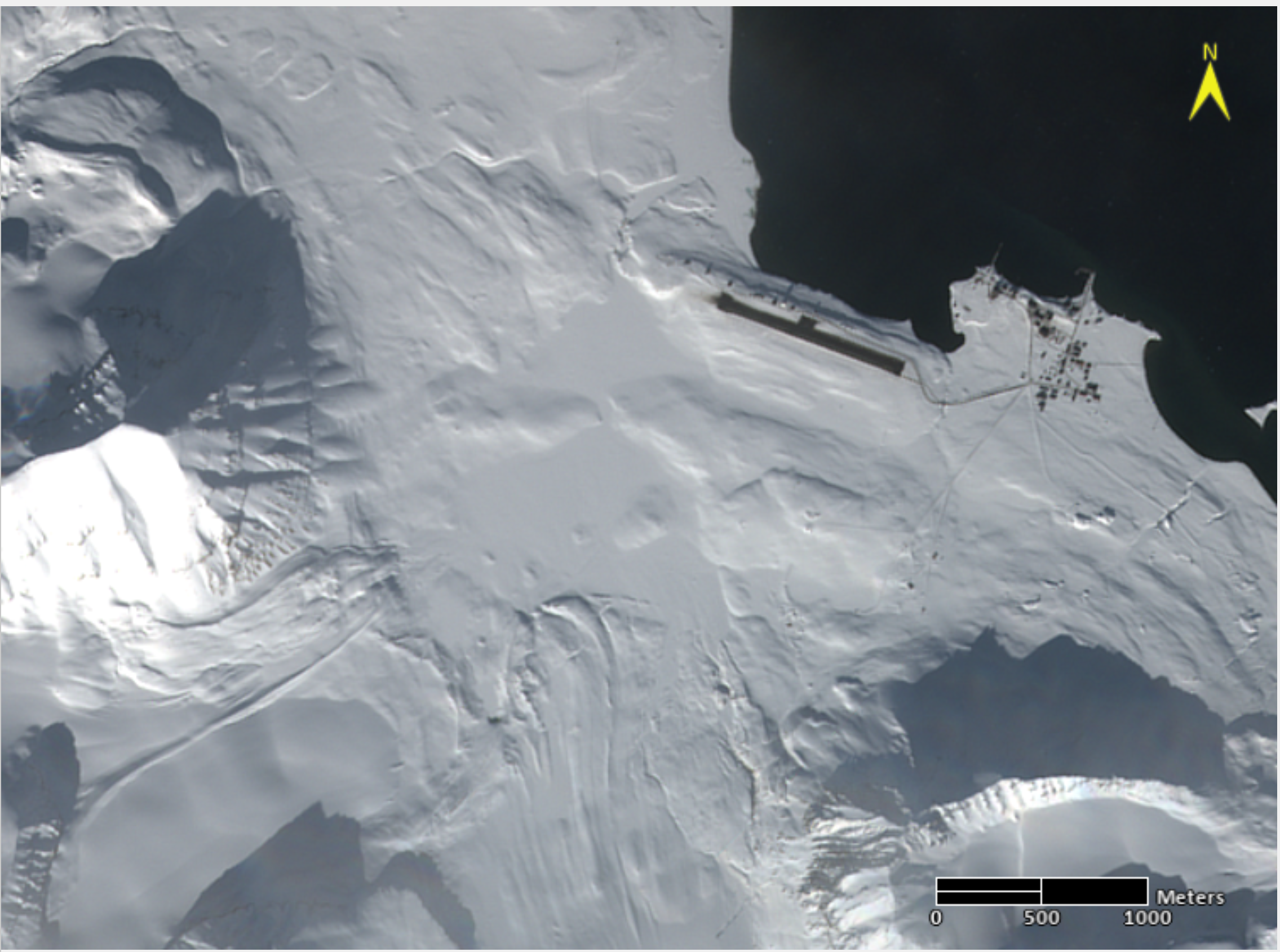geoscientificInformation
Type of resources
Available actions
Topics
Keywords
Contact for the resource
Provided by
Years
Formats
Representation types
Update frequencies
status
Scale
-
Daily averages of equivalent black carbon from aerosol absorption coefficient at 660nm measured using a Particle Soot Absorption Photometer (PSAP), manufactured by Radiance Research. MAC equal to 10 m^2/g.
-

The automated nivological station was installed in November 2020 in a flat area over the tundra about 80 meters far from the Gruvebadet Atmospheric Laboratory and nearby a snow sampling site from where weekly snow samples are collected for chemical analysis. Sensors (NESA LU06) have been calibrated by their companies before installation and are connected to a datalogger for continuous acquisition. For all the parameters, data are logged with 10-minute time resolution and then averaged over 1 hour. This activity is carried out by the Aldo Pontremoli Centre part of the Joint Research Agreement ENI-CNR, in the framework of the SnowCorD project (SIOS Core Data).
-

The automated nivological station was installed in November 2020 in a flat area over the tundra about 80 meters far from the Gruvebadet Atmospheric Laboratory and nearby a snow sampling site from where weekly snow samples are collected for chemical analysis. Sensors (Pt100 1/3 DIN) have been calibrated by their companies before installation and are connected to a datalogger for continuous acquisition. For all the parameters, data are logged with 10-minute time resolution and then averaged over 1 hour. This activity is carried out by the Aldo Pontremoli Centre part of the Joint Research Agreement ENI-CNR, in the framework of the SnowCorD project (SIOS Core Data).
-

The automated station to measures snow cover is operating at the Amundsen-Nobile Climate Change Tower since 2010, which is in a tundra site almost flat, located in the Kolhaugen area. The station is part of a complex infrastructure where multi-disciplinary observations are routinely performed. Data were collected using an ultrasonic distance sensor. This activity is carried out in the framework of the SnowCorD project (SIOS Core Data).
-

The automated station is operating at the Amundsen-Nobile Climate Change Tower since 2010, which is in a tundra site almost flat, located in the Kolhaugen area. The station is part of a complex infrastructure where multi-disciplinary observations are routinely performed. The instrument used for the meauserements is a PT100 thermocouple. This activity is carried out in the framework of the SnowCorD project (SIOS Core Data).
-

Observing Earth critical zone processes in the Bayelva basin (CZO@Bayelva). Data represents the average values and the corresponding standard deviation of Net Ecosystem Exchange (NEE), Ecosystem Respiration (ER) and Gross Primary Productivity (GPP) obtained from two different sites in the tundra of the Bayelva river basin: One site (named CZ) is located in the vicinity of the Climate Change Tower. The other one (named "Airport") is in the vicinity of the Ny Alesund Airport. Each average value is obtained as a mean over a set of around 20 point measures for each plot and each sampling date. Flux data are complemented by measurements of soil temperature, soil volumetric water content, air temperature and relative humidity, and solar irradiance. CO2 fluxes are measured using a flux chamber and a LI-COR IRGA by means of the Dynamic Flux Chamber method.
-

terrestrial Photography ApplicationS on Snow covEr in Svalbard Project start: 2018-04-15 - end: 2021-12-31 The purpose of this activity is the development of a new snow product focused on the estimation of the fraction of snow cover in selected sites at different spatial resolutions. This dataset will be aimed to support the estimation of cryospheric information using remotely sensed data, with a particular attention to data obtained in the framework of the Copernicus program. The availability of this dataset in a natural laboratory such as Svalbard islands will support the reduction of the gap between remotely sensed data and modeling activities. This added value will be very important considering the higher spatial resolution of the sensors recently deployed. The dataset will be based on re-using data obtained from public repositories such as the digital elevation model of Svalbard, the available webcam imageries in Svalbard and satellite products from Landsat, Sentinel and MODIS missions. All the available data will be integrated in order to estimate the fraction of snow cover, at different spatial resolutions, for each satellite mission. These estimations, computed at different sites in Svalbard islands, will offer the opportunity to better integrate results obtained by remote sensing with modeling and air-snow interactions studies. Particular attention will be devoted to the formalization of agreements with raw-data providers in case of not-public licensing policies.
-

Data refers to the CNR-IGG eddy covariance (EC) facility at the Arctic CZO (Critical Zone Observatory, hereafter CZO@Bayelva in Ny Ålesund). Data have been collected since 2019, all year long, with some interruptions due to ordinary or factory maintenance. The EC tower was installed to study CO2, H20, latent and sensible heat exchanges between soil, vegetation, and atmosphere. Carbon dioxide fluxes and environmental variables are recorded to estimate changes in carbon storage and explore CO2 fluxes drivers in the Arctic tundra. Measured parameters: Net vertical turbulent CO2 flux (umol+1s-1m-2); air temperature (deg_C), air relative humidity (%), wind speed (m+1s-1), max wind speed (m+1s-1), wind direction (deg_from_north). Method: The EC station respects both sensors and data processing standards defined by the ICOS community even if it is not an ICOS-associated station. Flux processing software: EddyPro set to default processing settings. The output variables have a 30-minutes resolution. The parameters available here are obtained by aggregating over a 3-hours time span. The associated measurement time (column B in the uploaded file) indicates the beginning of the 3-hour averaging period (es. Time T= [Time T; Time T+2h30 min]). Instrumentation: 3-Dimensional Sonic Anemometer (Manufacturer: Gill HS-50, s.n.: H183304, Firmware: 3.01, Instrument height: (info in the yearly metadata), North alignment: SPAR, North offset: (info in the yearly metadata), Wind data format: u, v, w); Enclosed path CO2/H2O Gas Analyzer (Licor Li7200RS, s.n.: 72H-0888, Firmware: (info in the yearly metadata), Tube length: 105.8 cm, Tube diameter: 5.33 mm, Northward separation: (info in the yearly metadata), Eastward separation: (info in the yearly metadata), Vertical separation: (info in the yearly metadata)). Quality assurance: Mauder and Foken (2004) flagging policy (0-1-2 system). Here, only high-quality data are reported (qc=0). The CNR-IGG Researchers took the photo of the eddy covariance during the field campaign.
-

Terrestrial Photography ApplicationS on Snow covEr in Svalbard (PASSES) Project start: 2018-04-15 - end: 2021-12-31 The purpose of this activity is the development of a new snow product focused on the estimation of the fraction of snow cover in selected sites at different spatial resolutions. This dataset will be aimed to support the estimation of cryospheric information using remotely sensed data, with a particular attention to data obtained in the framework of the Copernicus program. The availability of this dataset in a natural laboratory such as Svalbard islands will support the reduction of the gap between remotely sensed data and modeling activities. This added value will be very important considering the higher spatial resolution of the sensors recently deployed. The dataset will be based on re-using data obtained from public repositories such as the digital elevation model of Svalbard, the available webcam imageries in Svalbard and satellite products from Landsat, Sentinel and MODIS missions. All the available data will be integrated in order to estimate the fraction of snow cover, at different spatial resolutions, for each satellite mission. These estimations, computed at different sites in Svalbard islands, will offer the opportunity to better integrate results obtained by remote sensing with modeling and air-snow interactions studies. Particular attention will be devoted to the formalization of agreements with raw-data providers in case of not-public licensing policies.
-

Snow Core Data (SnowCorD) Project start: 2021-05-01 - end: 2025-12-31 The estimation of the Fractional Snow-Covered Area in the Brøgger Peninsula ensambling processed imagery located at different sites with different spatial resolutions. This dataset will be aimed to support the estimation of cryospheric information using remotely sensed data. The Ensembled FSCA retrievals are obtained, at the moment, by terrestrial photography applications established at the Amundsen-Nobile Climate Change Tower, at the Zeppelin observatory and at the Gruvebadet Snow Research Site in the Kongsfjorden area.